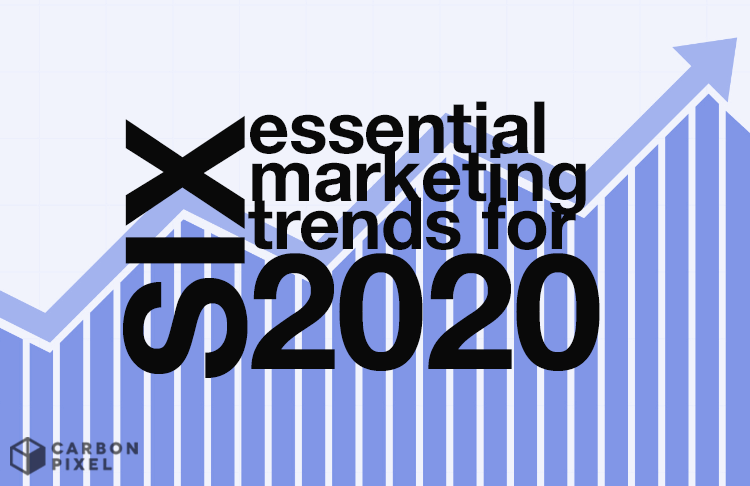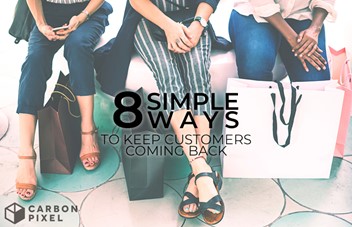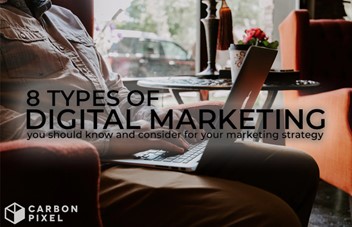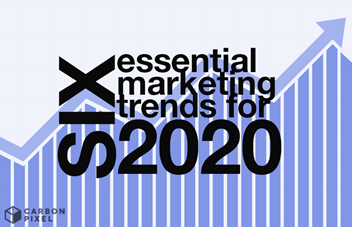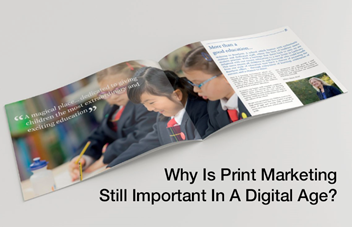"Alexa, I need some more washing powder"
With more and more ways to interact with technology, the ways we shop are changing and the ways companies react to that are making and breaking businesses and creating some serious competition. I mean, think about it, in your home you probably have a smart speaker, such as Alexa or Google Home. If not your little smartphone has a tiny assistant living in it.
These digital assistants can order Pizza, Chinese and pretty much any takeaway with one sentence, add items to your basket and help you create shopping lists.
But, it's not all about the digital assistants in 2020, here are what we think will be the 6 essential digital marketing trends in 2020
1) Customer Experience
2020 will be the year of the customer. Marketing is no longer about trying to convince people to buy from or work with your company. Instead, the priority has moved towards providing fantastic customer experiences that will keep people coming back for more and set you apart from your competitors.
When you focus on building a positive culture and providing great service, the marketing almost takes care of itself by creating brand advocates.
The growth of online content has given consumers more power. They are no longer a passive party when it comes to learning about products. They’re not waiting for you to tell you how great your products are. Instead, they’re going out and doing their own research and then sharing their own views.
We've covered great ways to keep your customers coming back time and time again, so make sure to check out 8 simple ways to keep customers coming back
2) Visualisation
With the explosion of smart speakers and voice search in recent years, you’d be forgiven for thinking that “readable” content is more important than visuals and design these days.
In fact, this couldn’t be further from the truth. While advancements in voice search are certainly influencing the way that we’ll create content now and in the future, you shouldn’t neglect visual content either.
Research has shown that people prefer visual content to plain text. You just have to look at the growth of image-focused platforms Pinterest and Instagram to see the proof of this.
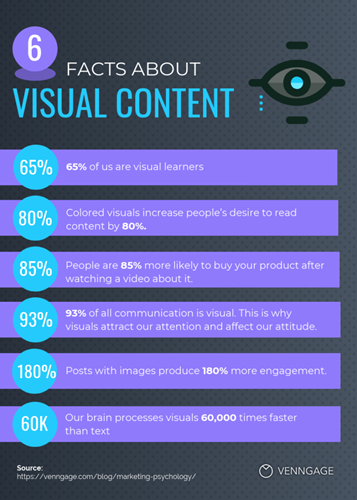
3) Personalisation
An increase in data collection on our customers has already had a huge impact on shopping experiences, Big brands such as ASOS, Boohoo and Nastygal are already using personalisation across every shopping channel, social, web and email to ensure you see clothing and accessories you're most likely to purchase.
Today’s consumers are flooded with marketing messages from multiple channels to the point where they have started to tune them out. Traditional advertising is losing its effectiveness, so what’s the answer? Personalised marketing messages that forge a real connection between the brand and the target market.
80% of consumers said that they’d be more likely to do business with a brand that provides a personalised experience, as per a survey by Epsilon.
Marketing personalisation is no longer limited to automatically changing the name of the person you’re addressing in your email newsletters. Improvements in technology such as AI combined with increased data collection and insights from social media and other sources have made it possible and easy to personalise everything from content to design to product recommendations and everything in-between.
Think about it, how much more likely are you to react to an advert if it contains your name?
4) SERP Position 0 & Featured Snippets
SEO will continue to be an important aspect of digital marketing as we move into 2020, but we’re now seeing one of the most major shifts in the SEO industry in the last decade.
With the growth of mobile and voice search, people are changing the way they use search engines like Google. Being number one in the search engine result pages or SERPS is no longer necessarily the primary goal your business should be aiming for. You’ve probably noticed your own search and browsing behaviour has changed in the last few years due to Google changes and the fact that you’re looking for the fastest information when you’re on the move.
Featured snippets and other “on SERP” information means that you don’t need to click through to a website to get the information you’re looking for anymore – it’s right there on the Google search results page.
This on-SERP information may appear in various places, but the most sought after position is right at the top of the page, before the organic listings. This position has been dubbed “position zero”. As it’s often the only information that a searcher will view, it’s highly coveted. Over 60% of search results returned by Google are now position zero search results.
Many brands are still trying to figure out how to achieve position zero as it requires different SEO techniques than those employed for a normal listing in the SERPs. If you can be the first in your industry to get there, you’ll have a huge advantage over your competitors.
5) AI-Based Automation
Will 2020 be the year of the rise of the robots? Probably not, but I'd love for it to be (but hopefully not in the Terminator-style of dystopian science fiction movies, please don't come back!)
We’ve already seen huge advancements in AI over the last few years, with the help of digital assistants, and a great increase in the number of businesses using AI-powered technology and automation to assist their marketing efforts.
AI is one of the major technologies behind voice search and smart assistants. It’s also made chatbots possible, which are now popping up on more websites than ever before. AI technology and automation are helping to take some of the leg work out of marketing so brands and marketeers can concentrate on strategy and crafting a fantastic customer experience.
Remember, the human aspect of marketing is still important (perhaps more important than ever before), so the idea is to use this technology to enhance your marketing efforts, not replace the real people behind them.
6) Voice Search
We've already mentioned Voice Search, so you knew it was going to be on this list. Voice search shows no sign of slowing down and will continue to be a major influence on how brands create content and market themselves online, especially as more Alexa's, Google Homes and HomePods are connected every single day
We’re not quite at the commonly cited prediction that 50% of searches will be driven by voice in 2020 (we’re currently sitting at about 20% according to Google), but this statistic is probably not that far in the future. The smart speaker business is booming, with around a third of UK households now owning a Google Home, Amazon Echo, Home-Pod or another smart speaker.
Consumers are also expecting to use voice search more in the near future – 71% of those aged 18–64 who already use a voice device intend to use it more in the future according to research by PwC.
Even if you and your brand isn’t ready for smart speaker advertising, it’s important that your content is optimised for voice search. Voice searchers use search differently. They use longer, more conversational queries, so slanting your content to serve these queries, as well as answering questions directly, can help to make it more visible to voice searches. This has the added bonus of making your content more likely to be picked up as a featured snippet or found on position zero on Google.


